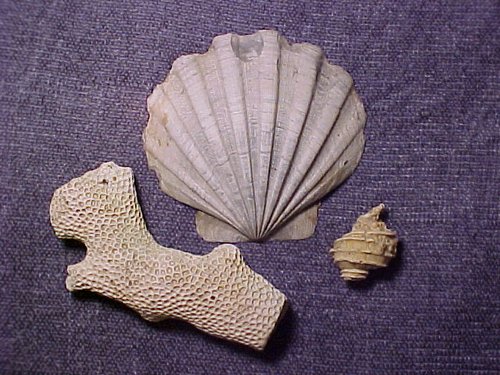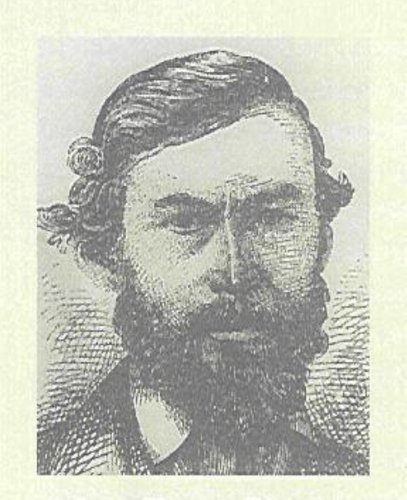In the beginning...
By Jere Dennison
It may come as a surprise to many members, but the history of the Deltaville region did not begin with the Fishing Bay Yacht Club. There were, in fact, other historic episodes that predated the existence of the yacht club, and here are some of those highlights.
 |
| Piankiatank Fossils |
Four to five million years ago, a tropical sea flooded the area surrounding our club. Evidence is found on the banks of the Piankatank from Bland Point upstream to Wilton Creek. Here in abundance are fossilized whalebones, coral, sharks teeth, the extinct scallop Chesapecten jeffersonius (the Virginia State Fossil), and the shells of other mollusks that thrived in the Miocene and Early Pliocene periods. No need for any earth-digging tools on your hunting expedition... just reach down into the shallows near the high escarpments and pluck them off the sandy bottom. It is well worth the trip.
The Piankatank River, meaning winding waterway, was named by Chief Powhatan before the arrival of the Jamestown colonists in 1607. Powhatan had subdued the Indians that dwelled along its shores, and absorbed the Piankatank tribe into his confederacy. There is evidence that Native Americans have inhabited the area since 10,000 BC, and you can see artifacts from early periods that are displayed in the excellent little Gwynns Island Museum. Sometime shortly after 1607, Captain John Smith explored the Piankatank on a mapping expedition and followed the river into its narrow, serpentine headwaters which he appropriately named Dragon Run.
At the outbreak of the Revolutionary War, Lord Dunmore, the last Colonial governor of Virginia, fled to Gwynns Island in 1776 from Norfolk because of unrest and rebellion. He and his small army and navy entrenched themselves for many months on the island until the Continental Army engaged his forces with artillery from across Milford Haven at the Battle of Cricket Hill. Dunmore and his entourage soon found it expedient to flee north to Maryland and eventually left the colonies to return permanently to England.
 |
| Lieutenant Wood |
During the War of Northern Aggression, the notorious Confederate raider, Lt. John Taylor Wood, CSN, frequently prowled the waters of the Piankatank searching for Yankee prey. Most often, Wood used cutting-out expeditions in which cutters (hand-rowed vessels with 15 to 20 oarsmen) were hauled overland by wagons and then launched in streams in the middle of the night. The cutters would silently approach enemy craft under cover of darkness and overpower their crews with blazing revolvers and slashing cutlasses; then the Rebs would sail away in the captured vessels. In August 1863, Wood and his men were bivouacked at nearby Wilton Creek when a Federal patrol boat cruised up the creek early in the morning to investigate rumors of suspicious rebel activity. A furious gunfight erupted, and the Union sailors were repulsed with their commander mortally wounded. Shortly after this skirmish, the Confederate raiders loaded their cutters onto wagons, transported them to the Rappahannock River, and successfully captured two Federal gunboats at anchor off Windmill Point.
 |
| Jackson Creek Drawbridge |
The town of Deltaville did not officially exist until 1909. The farming, fishing, and boat-building settlement in the area of what is now Deltaville was first served by two post offices: one at Sandy Bottom about 3 miles west and the other at Enoch located near the entrance to Jackson Creek. Before automobiles and, more importantly, good roads connected the area to the outside world, steamboats were the primary mode of travel. At Enoch, the Baltimore, Chesapeake, and Atlantic Steamboat pier extended a quarter of a mile across the Jackson Creek channel to the vicinity of channel marker #1 at the mouth of the creek. Because the pier blocked transiting workboats and schooners, a drawbridge was needed where it crossed the channel. The Great Hurricane of 33 destroyed the pier that was never to be rebuilt as other road-based modes of transportation were then becoming more convenient and practical. Thus ended the steamboat era on the Chesapeake Bay.
In 1949, our yacht club was relocated from Urbanna to Fishing Bay and the Age of Pleasant Sailing officially began.